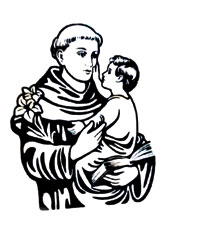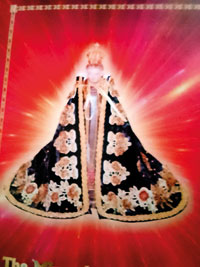Sunday Times 2
St Anthony’s Church, Wahakotte celebrates feast
View(s):By L B Senaratne
The church dedicated to St Anthony of Padua at Wahakotte was the centre of attraction over the last weekend when people of all religions gathered for the festival of St Anthony. A 6-inch statue of the saint was taken in procession with a High Mass led by Archbishop Vianney Joseph Fernando – Bishop Emeritus on Sunday 15, June.
King Wimaladharmasuriya II (1687) allowed the Catholics to enter his kingdom when they were persecuted by the Dutch in the coastal areas, and in his memory stands the Church of Wahakotte in the District of Matale off Gallewela Road.
This church marks 261 years. Its first resident priest was Rev Fr Benedict Perera (1886-1888) and the first parish priest was Rev Fr Frank Assaw (1888-1905). The persecuted Catholics choose Wahakotte as their home. The early settlers brought the 6-inch Statue from Padua, Portugal with them.
 |  |
The feast of St Anthony was celebrated at Wahakotte with a statue of the saint (R) taken in procession
The original settlers used a cattle shed for their devotions which became a place for prayer and worship in the night and a cattle shed during day.
Wahakotte Church has a history dating back to 1874 when an Italian priest, Father Berea, looked after the interests of the Catholics at Wahakotte.
It was Father Clement Pagnagini (later Bishop) who bought this land for Rs 10 for this Church in 1864, and thereafter bought more land to build this massive church dedicated to St Anthony.
Once during the time of persecution by the Dutch, the statue was hidden in a boiling rice pot, and another time embedded into a mud wall.
It is also the belief by very many people who visit this shrine, of all religious groups, that the site of the church once held the Kovil of Goddess Paththini – the Goddess of Purity, where a Fortress of King Dutugemunu stood.
The bonze candle stands with four trumpeting elephants are a gift to the church by the King of Kandy.
This shrine has, on festival days, the unique distinction of the use of hewisi.
Wahakotte was given to the Benedictine monks when the abbey at Kandy was under the Benedictine monks.
In 1886, Fr Benedict Perera became the first resident priest at Wahakotte.
In 1970, by a special act of Parliament
‘Act of Wahakotte’ the site became a national pilgrim centre.

